Ovulation in Drosophila is controlled by secretory cells of the female reproductive tract
- PMID: 23599892
- PMCID: PMC3628084
- DOI: 10.7554/eLife.00415
Ovulation in Drosophila is controlled by secretory cells of the female reproductive tract
Abstract
How oocytes are transferred into an oviduct with a receptive environment remains poorly known. We found that glands of the Drosophila female reproductive tract, spermathecae and/or parovaria, are required for ovulation and to promote sperm storage. Reducing total secretory cell number by interferring with Notch signaling during development blocked ovulation. Knocking down expression after adult eclosion of the nuclear hormone receptor Hr39, a master regulator of gland development, slowed ovulation and blocked sperm storage. However, ovulation (but not sperm storage) continued when only canonical protein secretion was compromised in adult glands. Our results imply that proteins secreted during adulthood by the canonical secretory pathway from female reproductive glands are needed to store sperm, while a non-canonical glandular secretion stimulates ovulation. Our results suggest that the reproductive tract signals to the ovary using glandular secretions, and that this pathway has been conserved during evolution. DOI:http://dx.doi.org/10.7554/eLife.00415.001.
Keywords: D. melanogaster; Notch signaling; Ovulation; exocrine glands; nuclear receptor; sperm storage.
Conflict of interest statement
The authors declare that no competing interests exist.
Figures
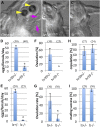
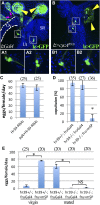
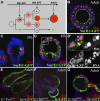


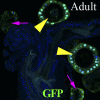
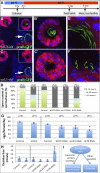

Comment in
-
Evolution, ovulation and cancer.Elife. 2013 Apr 16;2:e00729. doi: 10.7554/eLife.00729. Elife. 2013. PMID: 23599898 Free PMC article.
Similar articles
-
NR5A nuclear receptor Hr39 controls three-cell secretory unit formation in Drosophila female reproductive glands.Curr Biol. 2012 May 22;22(10):862-71. doi: 10.1016/j.cub.2012.03.059. Epub 2012 May 3. Curr Biol. 2012. PMID: 22560612 Free PMC article.
-
The Sf1-related nuclear hormone receptor Hr39 regulates Drosophila female reproductive tract development and function.Development. 2008 Jan;135(2):311-21. doi: 10.1242/dev.015156. Epub 2007 Dec 12. Development. 2008. PMID: 18077584
-
Evolution, ovulation and cancer.Elife. 2013 Apr 16;2:e00729. doi: 10.7554/eLife.00729. Elife. 2013. PMID: 23599898 Free PMC article.
-
Notch signalling in the nucleus: roles of Mastermind-like (MAML) transcriptional coactivators.J Biochem. 2016 Mar;159(3):287-94. doi: 10.1093/jb/mvv123. Epub 2015 Dec 28. J Biochem. 2016. PMID: 26711237 Review.
-
The developments between gametogenesis and fertilization: ovulation and female sperm storage in Drosophila melanogaster.Dev Biol. 2003 Apr 15;256(2):195-211. doi: 10.1016/s0012-1606(02)00125-2. Dev Biol. 2003. PMID: 12679097 Review.
Cited by
-
The Nuclear Receptor Seven Up Regulates Genes Involved in Immunity and Xenobiotic Response in the Adult Drosophila Female Fat Body.G3 (Bethesda). 2020 Dec 3;10(12):4625-4635. doi: 10.1534/g3.120.401745. G3 (Bethesda). 2020. PMID: 33087412 Free PMC article.
-
Control of male and female fertility by the netrin axon guidance genes.PLoS One. 2013 Aug 15;8(8):e72524. doi: 10.1371/journal.pone.0072524. eCollection 2013. PLoS One. 2013. PMID: 23977313 Free PMC article.
-
Different modes of Notch activation and strength regulation in the spermathecal secretory lineage.Development. 2020 Feb 7;147(3):dev184390. doi: 10.1242/dev.184390. Development. 2020. PMID: 31988187 Free PMC article.
-
Identification, expression profiling and potential functional roles of nuclear receptors in the social aphid Pseudoregma bambucicola.BMC Genomics. 2025 May 21;26(1):518. doi: 10.1186/s12864-025-11724-5. BMC Genomics. 2025. PMID: 40399792 Free PMC article.
-
Quantitative proteomics reveals rapid divergence in the postmating response of female reproductive tracts among sibling species.Proc Biol Sci. 2020 Jun 24;287(1929):20201030. doi: 10.1098/rspb.2020.1030. Epub 2020 Jun 24. Proc Biol Sci. 2020. PMID: 32576111 Free PMC article.
References
Publication types
MeSH terms
Substances
Grants and funding
LinkOut - more resources
Full Text Sources
Other Literature Sources
Molecular Biology Databases

